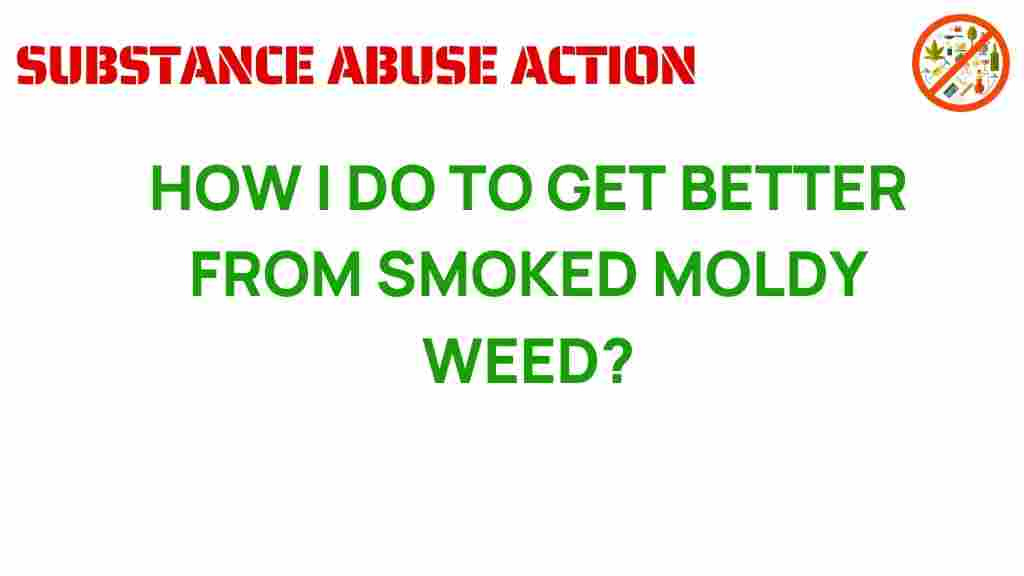Overcoming the Hidden Dangers of Moldy Weed
Moldy weed is a serious concern for cannabis users, often overlooked in discussions about the benefits of cannabis and its consumption. As someone who has navigated the troubling waters of moldy cannabis, I want to share my personal journey, the health risks associated with moldy weed, and the steps I took towards recovery. My story includes experiences with addiction, respiratory issues, and the importance of prevention and treatment. Together, we can shed light on this often-hidden danger in the cannabis community.
Understanding Moldy Weed and Its Health Risks
Moldy weed refers to cannabis that has been contaminated with mold, which can occur during any stage of growth, harvesting, or storage. The health risks associated with consuming moldy cannabis can be significant and should not be ignored. Here are some of the common health risks:
- Respiratory Issues: Inhaling mold spores can lead to serious respiratory problems, including asthma attacks, bronchitis, and lung infections.
- Allergic Reactions: Some individuals may experience allergic reactions to mold, manifesting as sneezing, itchy eyes, or skin rashes.
- Infections: For those with compromised immune systems, moldy weed can lead to severe infections that may require medical intervention.
- Psychological Effects: Moldy cannabis can sometimes cause unexpected psychological effects, including anxiety and paranoia.
My Personal Journey with Moldy Weed
Like many cannabis users, I initially viewed cannabis as a natural remedy and a means to relax. Unfortunately, I encountered moldy weed early in my journey. Here’s how it unfolded:
It started with a friend who offered me some cannabis that he had grown. Unbeknownst to me, it was contaminated with mold. I didn’t notice anything unusual at first; the smell and appearance seemed fine. However, after a few sessions, I began experiencing severe respiratory issues. I brushed it off as a seasonal allergy until the symptoms worsened.
The Symptoms and Realizations
As I continued to consume the moldy weed, my health deteriorated. Here are some of the symptoms I experienced:
- Coughing and wheezing
- Frequent headaches
- Fatigue
- Increased anxiety levels
It became clear that my cannabis consumption was linked to these health issues. I realized I had to take action immediately. This was the turning point in my personal journey.
Seeking Treatment and Support
Understanding the health risks associated with moldy weed was crucial. I sought out medical attention to address my respiratory issues. The doctor recommended the following:
- Medication: Prescribed inhalers and antihistamines helped manage my respiratory symptoms.
- Therapy: I began attending therapy sessions to deal with the psychological effects I was experiencing.
- Support Groups: Connecting with others who faced similar challenges provided a network of support and understanding.
Recovery from the negative effects of moldy weed took time, patience, and effort. I learned that acknowledging the problem was the first step towards healing.
Preventing Moldy Weed: What I Learned
Throughout my recovery, I gathered valuable insights on preventing moldy weed. Here are some effective prevention tips:
- Buy from Reputable Sources: Always purchase cannabis from licensed dispensaries or trusted growers who adhere to safety standards.
- Inspect Your Cannabis: Check for any signs of mold, such as unusual smells or fuzzy spots on the buds.
- Store Properly: Keep cannabis in a cool, dry place in airtight containers to minimize moisture exposure.
- Educate Yourself: Stay informed about the signs of mold and the risks associated with consuming contaminated cannabis.
Dealing with Addiction and Moving Forward
My personal journey through the challenges of moldy weed also highlighted issues of addiction. Cannabis can be a double-edged sword; while it offers therapeutic benefits, it can also lead to dependency. Here’s how I managed my recovery:
- Acknowledge Addiction: I had to face the reality of my cannabis use and how it impacted my life.
- Set Boundaries: I established clear limits on my consumption and sought healthier alternatives for relaxation.
- Engage in Healthy Activities: I turned to exercise, meditation, and hobbies to fill the void left by cannabis.
Throughout this process, I learned that recovery is not linear. There are ups and downs, but maintaining a supportive environment is crucial.
Troubleshooting Tips for Moldy Weed Awareness
Here are some troubleshooting tips for anyone who suspects they may have consumed moldy weed:
- Monitor Symptoms: If you experience respiratory issues or allergic reactions, seek medical advice immediately.
- Document Your Experience: Keep a journal of your symptoms and consumption habits to identify patterns.
- Communicate: Talk to friends or support groups about your experiences and seek advice.
Taking these steps can help you navigate the recovery process effectively.
Conclusion: The Path to Recovery
My journey with moldy weed opened my eyes to the hidden dangers of cannabis consumption. The health risks associated with moldy weed are real and can lead to significant health issues, including respiratory problems and addiction. However, through proper treatment and support, I was able to recover and learn the importance of prevention.
For anyone facing similar challenges, I encourage you to seek help and educate yourself about the risks of moldy weed. Remember, you are not alone in this journey. Support is available, and recovery is possible.
If you want to learn more about cannabis safety and health risks, check out this informative resource.
Additionally, for those looking for community support, I highly recommend visiting support groups that focus on addiction and recovery. Together, we can foster a healthier cannabis culture.
This article is in the category Recovery and created by SubstanceAbuseAction Team
